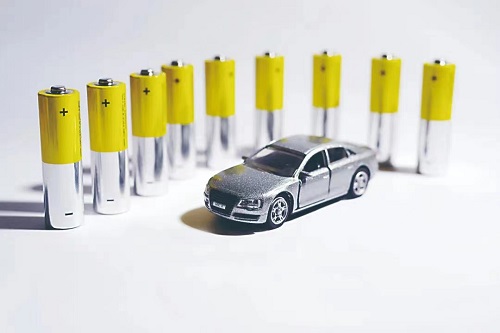China’s power battery production shipment in 2021 will be 220 GWh, a year-on-year increase of 175%.
Lithium iron phosphate
Among them, production output of (LFP) lithium iron phosphate batteries was 117 GWh, a year-on-year increase of 270%, the production shipment of ternary lithium batteries was 109 GWh, a year-on-year increase of 127%.
In 2021, as of now, the production output of lithium iron phosphate batteries has exceeded that of ternary lithium batteries for 8 consecutive months, and the market share in multiple months exceeds 60%.

EV Lithium battery
Since May last year, China’s lithium iron phosphate (LFP) battery production have begun to “surpass” ternary lithium batteries, and the former’s market advantage is still expanding.
In the context of the vigorous development of the new energy vehicle industry, as the former “leader” of the power battery market, is lithium iron phosphate battery making a strong comeback? What will happen to the situation of China’s power battery market?
Domination of LFP
Lithium iron phosphate batteries dominate the market for the first time in 4 years
In 2021, the growth rate of lithium iron phosphate battery production has far exceeded that of ternary lithium batteries that have dominated the market for many years.
The installed capacity of lithium iron phosphate and ternary lithium batteries in the domestic power battery market in 2021 will account for 53% and 47% respectively, completely reversing the trend that the production of lithium iron phosphate batteries has been less than that of ternary lithium batteries since 2018. .
The rapid growth of lithium iron phosphate battery shipment is primarily due to the rapid development of Chinese domestic new energy vehicle industry.
Although the impact of the COVID-19 epidemic in the past year still exists, from the perspective of market production and sales, the new energy vehicle industry is developing rapidly. At the same time, under the background of carbon neutrality, new energy vehicles have received unprecedented attention.
It is worth noting that the growth rate of lithium iron phosphate battery shipments once “outperformed” the growth rate of new energy vehicle production, which is directly related to the gradual decline of domestic new energy vehicle subsidies.
The growth rate of lithium iron phosphate battery production far exceeds that of ternary lithium batteries.
Performance & cost advantages
In addition to the favorable external environment, the cost performance of lithium iron phosphate batteries is also rapidly improving. At present, the product performance and cost advantages of lithium iron phosphate LFP batteries are very prominent, which is an important factor for its “winning” in 2021.
At the same time, continuous technological innovation has enabled the lithium iron phosphate battery to basically meet the needs of all models with a range of less than 600 kilometers. In particular, new energy vehicle companies such as BYD and Tesla have brought strong impetus to the growth in demand for lithium iron phosphate batteries.
Compared with ternary lithium batteries that require high prices and relatively scarce metals such as cobalt and nickel, the cost of lithium iron phosphate batteries is lower, especially when the prices of raw materials such as lithium battery cathode, anode, and electrolytes are rising at the same time.
Driving force
In 2021, the prices of the upstream raw materials of lithium batteries such as lithium carbonate and cobalt soared.
Even in the international market where ternary lithium batteries have a clear advantage, automakers such as Tesla, BMW, Ford, have indicated that they will consider switching to using cost-effective lithium iron phosphate battery.
From the perspective of past accidents, including new energy vehicles and energy storage power stations, the accident probability of ternary lithium batteries is still much higher than that of lithium iron phosphate batteries. The key reason is that the internal structure design of the latter is relatively safer.
In fact, both consumers and power battery manufacturers currently have some preference for lithium iron phosphate batteries.
On the one hand, consumers will consider the safety performance of lithium iron phosphate batteries when purchasing a car, and tend to buy safer batteries.
On the other hand, considering the recall and severe penalties that may be faced after a safety accident, the manufacturer’s preference for safety will also further expand the market advantage of lithium iron phosphate batteries.
Technical diversification
Segment demand to promote diversification of battery routes
Lithium iron phosphate batteries have regained the market with multiple advantages, can this trend continue?
Judging from the current market development, the installed capacity growth of lithium iron phosphate batteries is still expected to be higher than that of ternary lithium batteries.
It is optimistic that the proportion of lithium iron phosphate batteries in the domestic market is expected to reach 70%.
Prospect
However, from the perspective of materials, there is not much room for improvement in the energy density of lithium iron phosphate batteries at present, which may limit its future application scenarios
As China’s new energy vehicle market gradually matures, more market segments will further shape the power battery market.
From the perspective of consumer choice, there will be high-class, mid-range and low-class models
From the perspective of mileage, there will be differences in short-range, low-speed, medium-range, long-range EV. At the same time, when the power batteries are used in different regions, the battery types will also vary.
In the future, the new energy vehicle market is expected to be more subdivided. In the short-range, low-speed or medium-to-short-range EV market, lithium iron phosphate batteries are likely to maintain a mainstream position, but for long-range or other purpose vehicles, ternary lithium batteries are also expected to maintain a certain level of advantage.
In addition to the current ternary lithium batteries and lithium iron phosphate batteries, new battery technology such as lithium manganese iron phosphate, solid-state batteries, lithium-rich manganese-based batteries, and sodium-ion batteries are also worthy of attention.
Among them, lithium iron manganese phosphate, sodium-ion batteries will perhaps enter the commercial application stage in the next 2-3 years.
 +8613906047998
+8613906047998




